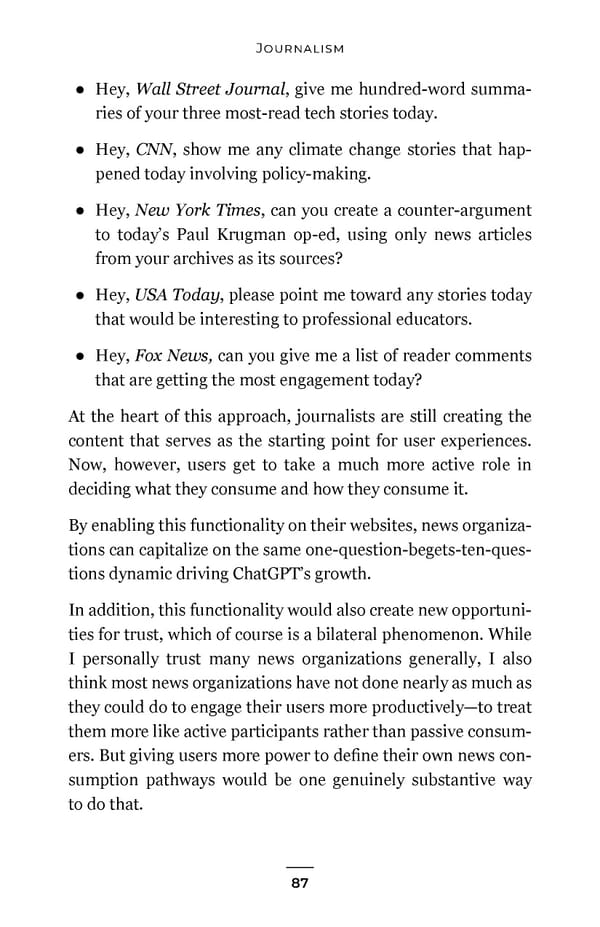Journalism ● Hey, Wall Street Journal, give me hundred-word summa- ries of your three most-read tech stories today. ● Hey, CNN, show me any climate change stories that hap- pened today involving policy-making. ● Hey, New York Times, can you create a counter-argument to today’s Paul Krugman op-ed, using only news articles from your archives as its sources? ● Hey, USA Today, please point me toward any stories today that would be interesting to professional educators. ● Hey, Fox News, can you give me a list of reader comments that are getting the most engagement today? At the heart of this approach, journalists are still creating the content that serves as the starting point for user experiences. Now, however, users get to take a much more active role in deciding what they consume and how they consume it. By enabling this functionality on their websites, news organiza- tions can capitalize on the same one-question-begets-ten-ques- tions dynamic driving ChatGPT’s growth. In addition, this functionality would also create new opportuni- ties for trust, which of course is a bilateral phenomenon. While I personally trust many news organizations generally, I also think most news organizations have not done nearly as much as they could do to engage their users more productively—to treat them more like active participants rather than passive consum- ers. But giving users more power to define their own news con- sumption pathways would be one genuinely substantive way to do that. 87
 Impromptu by Reid Hoffman with GPT-4 Page 93 Page 95
Impromptu by Reid Hoffman with GPT-4 Page 93 Page 95